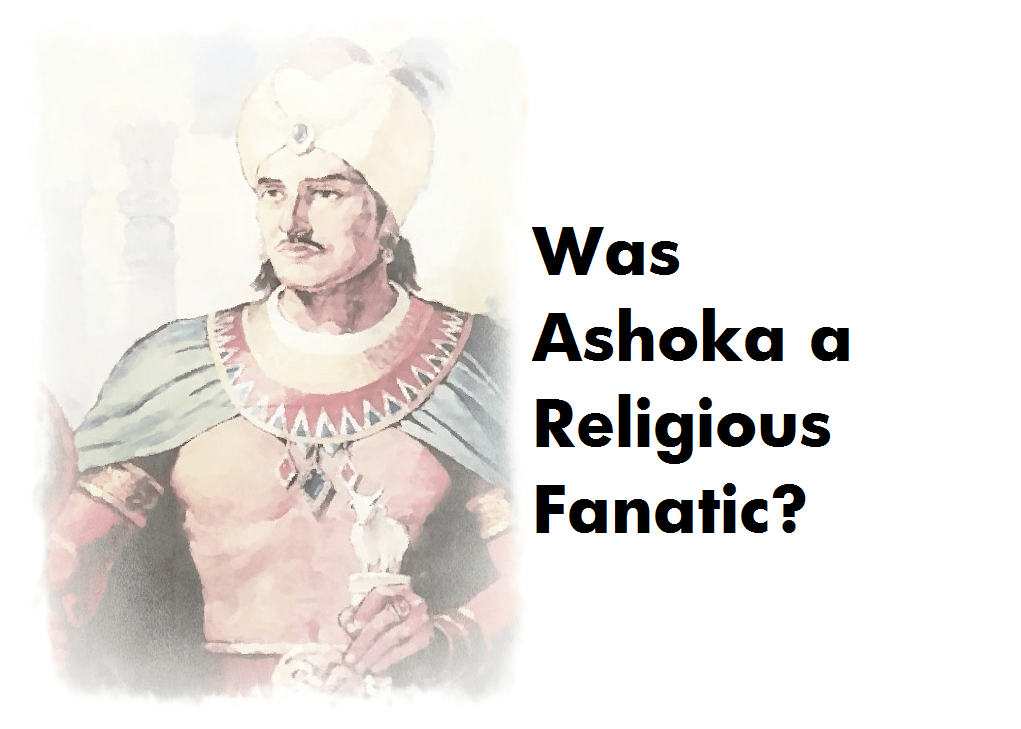“Ashoka the Great” was India’s first Religiously Fanatic Jehadi

Indian history is a virtual lie. And, as it remains in the hands of Communist HIstorians, the depth of lie increases by the day. Sometimes, one doesn’t know whom to consider as a great and whom not to. The baggage of our conditioning is so heavy that we have to be literally pushed to take it off.
There are two myths that I would like to discuss here:
Persecution of Buddhist by the Hindus
Benevolence of Buddhists and Buddhism to an extent that anything contrary is supposed to be a lie.
Avadanas are like Puranas of the Buddhist literature. They narrate the history as seen by the Buddhists. Of all the Vadanas, there are two that are relevant to this discussion – Ashokavadana and the Divyavadana.
“Persecution of Buddhists by Hindus”
First and foremost, notice the plurality of the claim. It is presented as if such an action or set of actions were an institutional occurrence. However, when you go into the claims by the Indian historians, you find only one example. Let us read that claim from the very mouth of one such historian – Gargi Chakravartty.
“Another myth has been meticulously promoted with regard to the tolerance of the Hindu rulers. Let us go back to the end of second century BC. Divyavadana (sic), in a text of about the second-third century AD, depicts Pushyamitra Shunga as a great persecutor of Buddhists. In a crusading march with a huge army he destroyed stupas, burnt monasteries and killed monks. This stretched up to Shakala, i.e. modern Sialkot, where he announced a reward of 100 gold coins to the person who would bring the head of a Buddhist monk. Even if this is an exaggeration, the acute hostility and tensions between Pushyamitra and the monks cannot be denied.”
As may be known to an amateur historian even, Divyavadana is not a person but the name of a book. But then, when these Communists Historians rise to fame on the back of nepotism (as exposed by the Allahabad High Court itself!) as opposed to actual scholarship, such confusions can be expected.
So it was after all the act of Pushyamitra that was painted across the entire Hindu history to make a claim that is remarkably mischievous and machiavellian. Anyhow, it is important that we do go into this claim – as precious as it is to the nepotism-ruled world of Indian historians.
Now let us go to the other text, Ashokavadana. At the end of this text, the story, almost verbatim is found again as mentioned by Konraad Elst (Sujitkumar Mukhopadhyaya: “The Ashokavadana”, p.134).
Interestingly, this claim is also preceded with another story that is quite damning for the Secular Eulogizing of Ashoka as a “Great Emperor”. Specifically after his conversion to Buddhism. It is said that after the dastardly ambitious king Ashoka (a Hindu of course by then) had seen a lot of bloodshed in the Battle of Kalinga, he converted to Buddhism. And from then, everyone lived happily ever after.
Right? That is how the story goes?
But the very history writing of Buddhists doesn’t back that up, unfortunately!
Ashokavadana mentions the following:
“At that time, an incident occurred which greatly enraged the king. A follower of the Nirgrantha (Mahavira) painted a picture, showing Buddha prostrating himself at the feet of the Nirgrantha. Ashoka ordered all the Ajivikas of Pundravardhana (North Bengal) to be killed. In one day, eighteen thousand Ajivikas lost their lives. A similar kind of incident took place in the town of Pataliputra. A man who painted such a picture was burnt alive with his family. It was announced that whoever would bring the king the head of a Nirgrantha would be rewarded with a dinara (a gold coin). As a result of this, thousands of Nirgranthas lost their lives.”
It is further mentioned that only when Vitashoka, an enlightened Buddhist Monk of the Theravada Buddhist order was killed, mistaken for a Nirgrantha (Jain Monk) / Ajivikas (Ascetics), that the order to kill the Jain Monks was revoked by Ashoka. [It is not clear completely whether the order was against Ajivikas – the Ascetic Monks of a Hindu order or Nirgranthas, the Jain Monks]
If we were looking for a fanatic who would kill others due to a different belief – the equivalent of the Modern Day Islamic Jehadis – in India’s history, the Ashoka is the closest who comes to that description.
His “repentance” on killings was extremely short lived indeed! In fact, he followed the exact path that many Muslim converts from Hinduism have followed – of killing their Hindu brethren after conversion with a unique sense of vengeance. And when it comes from someone who had converted to Buddhism, it is intriguing.
Now, in this shocking revelation, let us not forget a couple of things:
The text, on which the entire Hindus have been painted as persecutors of Buddhism, because of what it says of Pushyamitra, is also the text which has an even more sinister claim about Ashoka. But then Ashoka goes scott free! So, if the claim about Ashoka is false, then the claim on Pushyamitra also can’t be true – because the author and the text loses credibility!
But wait, the text is Buddhist Historical writing, written by Buddhists of that era. So, even if Pushyamitra was somewhat anti-Buddhist, there is a strong likelihood that he may have been given an even more negative treatment, and Ashoka – because he was a new convert and a zealous one at that – may have been handled with kid gloves.
So, is it that Ashoka’s crimes AFTER his conversion were even worse?



